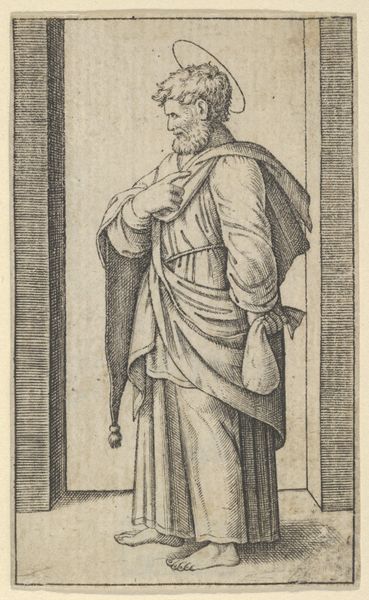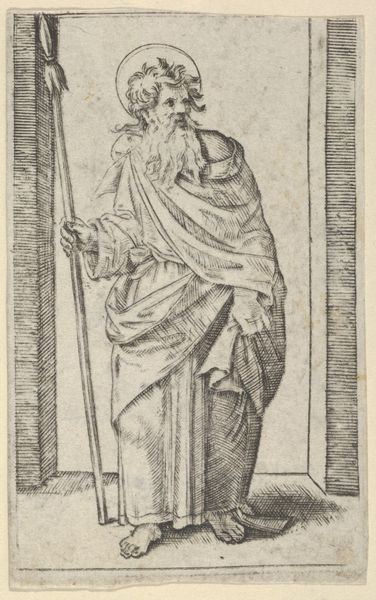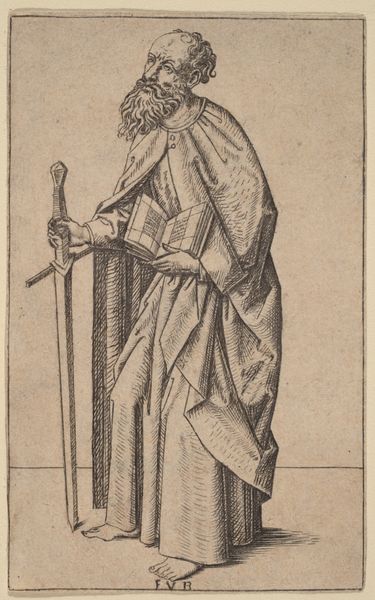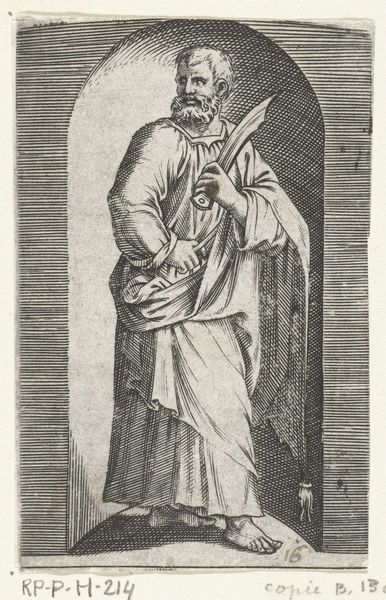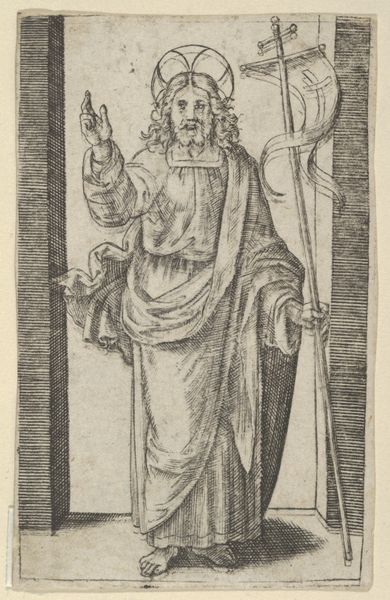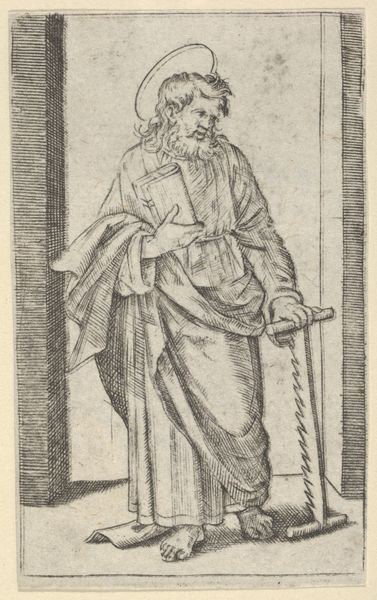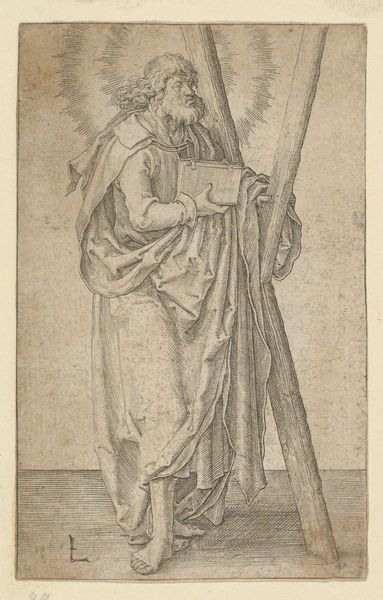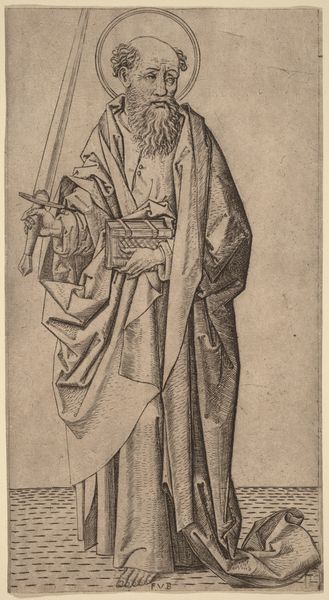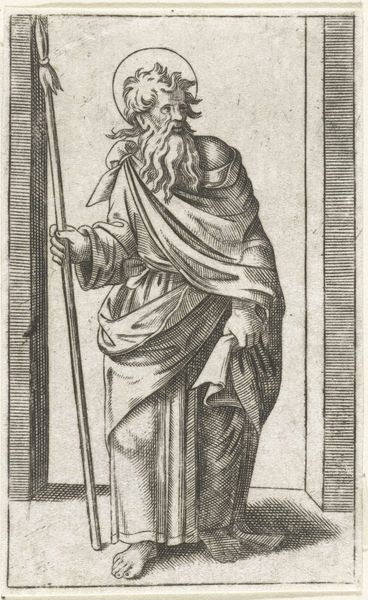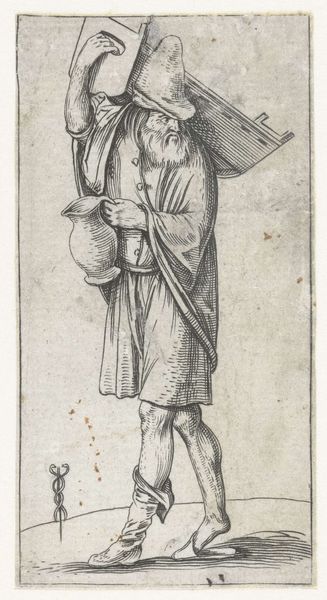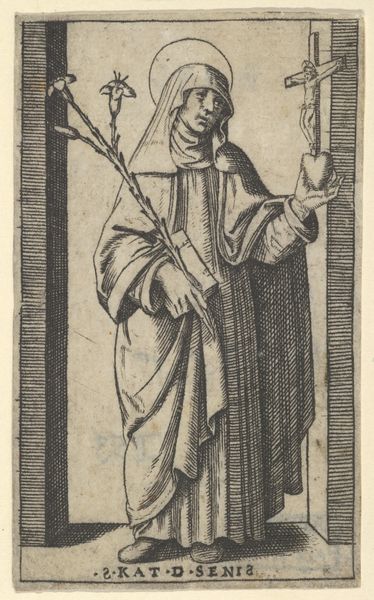
Saint Bartholomew, knife in his right hand, from "Piccoli Santi" (Small Saints) 1495 - 1532
0:00
0:00
drawing, print, engraving
#
portrait
#
drawing
# print
#
figuration
#
history-painting
#
italian-renaissance
#
engraving
Dimensions: 3 3/16 x 1 7/8 in. (8.1 x 4.7 cm)
Copyright: Public Domain
Editor: This engraving by Marcantonio Raimondi, dating from the late 15th to early 16th century, depicts Saint Bartholomew holding a knife. It’s so detailed, especially for a print. I wonder what stories the process of creating an image like this can tell us. What can you tell me about this work? Curator: It’s a compelling example of printmaking in the Italian Renaissance. Consider the physical act: Raimondi, working from another artist's design, meticulously cut into a copper plate to create this image. This isn't just about replicating an image; it’s about engaging with craft. Editor: So, the value lies not only in the final image, but in the labor invested in the creation of the copper plate? Curator: Exactly. Look at the density of the lines, creating areas of light and shadow. This involved highly skilled work. But then also think about what it enabled: widespread, and relatively inexpensive, distribution. What does this mass production mean for religious imagery in society? Editor: Did this influence art differently than, say, paintings done in the Renaissance? Curator: It democratized it to some extent. Think about how accessible such an image would be compared to a painting commissioned by a wealthy patron. The economic implications for both artist and patron are relevant here. How would artists, like Raimondi, navigate the world of both craft and mass commodity production? Editor: That makes me see this Saint Bartholomew in a new light, beyond just religious iconography. I am starting to see how this image is an interplay of artistic labor, materials, and even economic status. Curator: Precisely. Considering the historical materials and methods unveils an artistic value chain – how does the artistic creation impact culture and economics during its time?
Comments
No comments
Be the first to comment and join the conversation on the ultimate creative platform.
